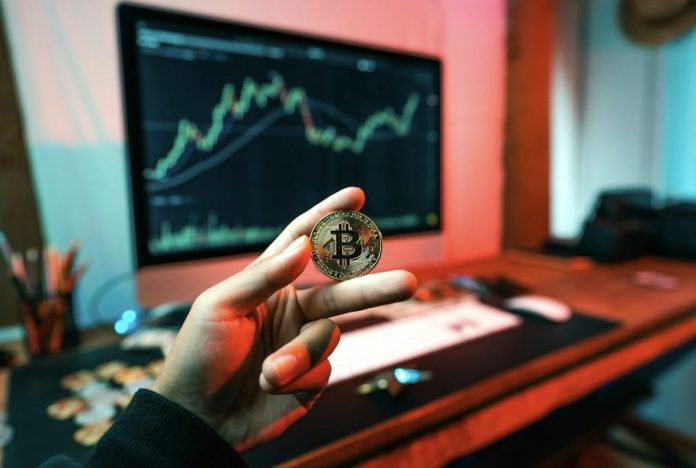Remember the good old days of, let’s say, the 1960s, when investing was straightforward? You’d do it your grandparents’ style: pick a good stock, choose a broker to place a trade for you, and hope for steady growth. Some other person (not a computer) would do the math for you.
This simplicity, however, didn’t last long, as very soon, things began to change. The year 1969 brought the first crack in the wall, and that’s the Internet. As revolutionary as it was, it also marked the beginning of endless complications in the trading world. By the end of the 20th century, online trading had fully taken off, transforming investing as we knew it, making it jump from a slow process into a fast, tech-driven system.
The Tech Evolution
And this technology-driven system… brought a whirlwind of innovation: positions and swing trading, day trading, quantitative trading, algorithmic trading, HFT (high-frequency trading), 24/7 markets, mobile investing apps, crypto exchanges, Forex trading, and, eventually, bot-driven (automated) trading. Each wave added more speed, higher access, and greater volatility. Markets became more liquid, aka capable of processing high volumes of trades in real time with minimal friction. Liquidity stopped being just a feature; it became the goal itself.
In the last decade, we have witnessed the ripple effect. These systems completely reshaped how we invest, trade, and, interestingly, how we bet, blurring the lines between finance, crypto, and even sports wagering.
Liquidity as the New Standard
The trading world has changed drastically.
What was once a slow, manual process is now driven by speed, precision and volume. Liquidity is no longer a luxury; it has become the market’s defining feature, a goal in itself.
But what exactly is liquidity? At its core, liquidity describes an asset’s ability to be bought and sold at the price that reflects its true market value, with different assets falling on different points of the spectrum; stocks and crypto values are typically very liquid, while real-world goods like fine art or real estate fall on lower points. We can use the difference between buying a fraction of a Nano coin and a house:
Sitting at a very affordable price, almost everyone can buy Nano fractions with just one click (that’s high liquidity).
While selling a house involves finding a buyer, negotiating a price, legal paperwork, and more, taking time and resources (that’s low liquidity).
In today’s fast-paced society, the ability to enter and exit positions quickly, with minimal friction, is no longer optional; it has become a standard even for the basic internet user.
Rules Have Changed. Completely.
The finance world went upside down. Dramatically. It all came like a hurricane and the core mechanics were rewritten. All of a sudden, one tap could do it all; buy, sell, hedge, or speculate, and at any time. Traders no longer needed to wait for market hours or rely on a broker. The era of manual trading seems to have come to an end.
Convenience was guaranteed, so was complexity. Data flowed faster, but so did decisions. All of a sudden, you needed to think fast, and/or rely on bots to do the math. We now have trading ecosystems with programmable liquidity pools, and access is promised to everyone.
In many ways, the human trader took a back seat. The machine’s speed and the code’s fluidity are now the key players in trading, investing, and even sports wagering.
When Sports Trading Entered the Picture
The betting exchange practices started as niche platforms in the early 2000s, as an alternative to betting with bookies. In these systems, players could bet against each other at lower fees than those offered by a regular sportsbook.
Very soon, betting exchange sites became independent systems, so there are now names like Betfair, EasyBet Exchange, Matchbook Betting Exchange and others. These sites allow players to agree on the odds and the stake for a game or a race, and place opposite bets on the same outcome.
For example, if there is a horse race, one player can back a horse to win, while another can lay a bet against them. The platform itself acts as a middleman, matching people who want to bet against each other on the same game.
It also allows players to buy and sell positions similar to how it is done in the trading market, mirroring the very essence of liquidity. Pricing is dynamic, multiple participants are involved, and traders have 24/7 access. Trades are fast, easy and low-friction.
The result is a system where players aren’t just placing bets with a bookie, but they are actively trading on outcomes, managing exposure, and hedging mid-game risks, which draws the attention of not only casual bettors but traders alike.
Are We Trading, Investing, or Wagering?
At the very moment liquidity became the market’s most important trait, the boundaries between trading, investing, and betting began to dissolve.
Nowadays, betting on a horse race, buying a crypto value, or a stock can, in essence, be very similar. The action often involves multiple people; the trades are done with low friction, you can assess them at any time, and buy and sell your stocks, cryptocurrency, and even bets on the horse race outcome in real time online with just one click. The label is no longer what’s important, but speed, precision, and access. And the bettors? They are everywhere.



 Bitcoin
Bitcoin  Ethereum
Ethereum  Tether
Tether  XRP
XRP  USDC
USDC  Solana
Solana  TRON
TRON  Lido Staked Ether
Lido Staked Ether  Cardano
Cardano  Avalanche
Avalanche  Toncoin
Toncoin